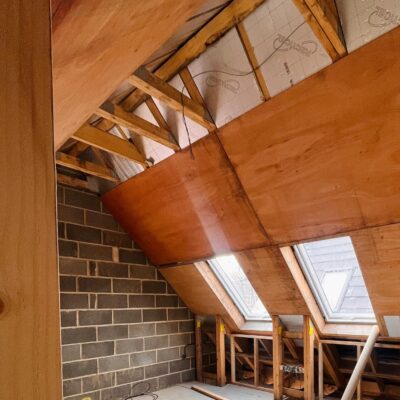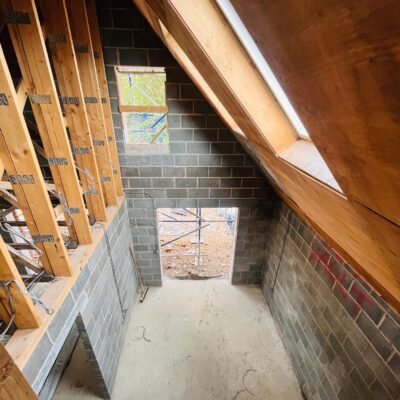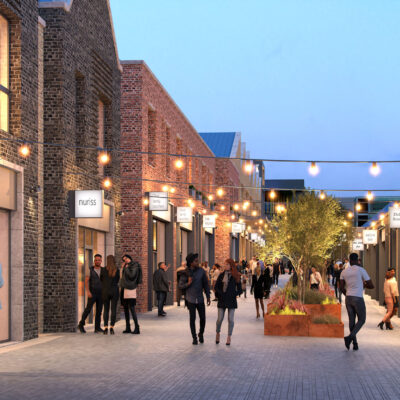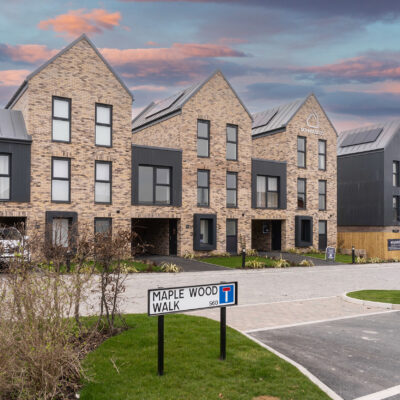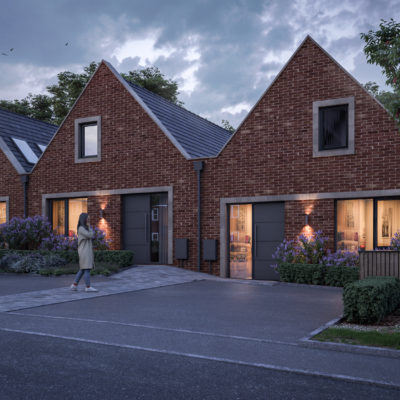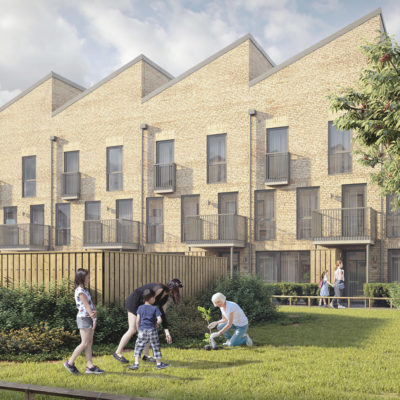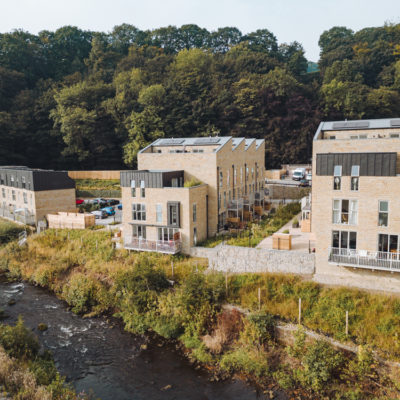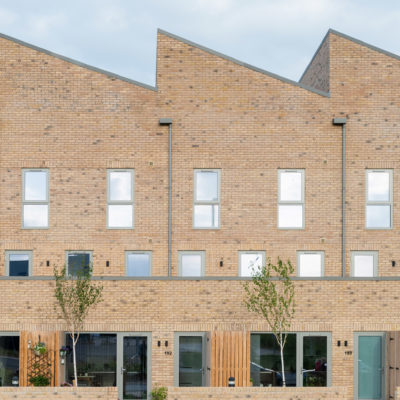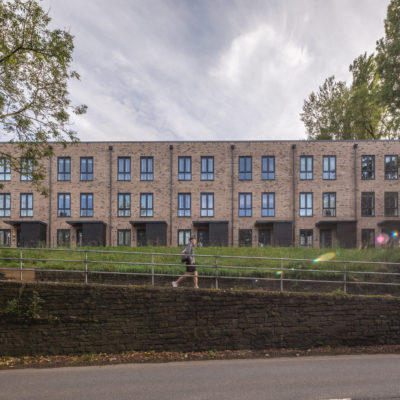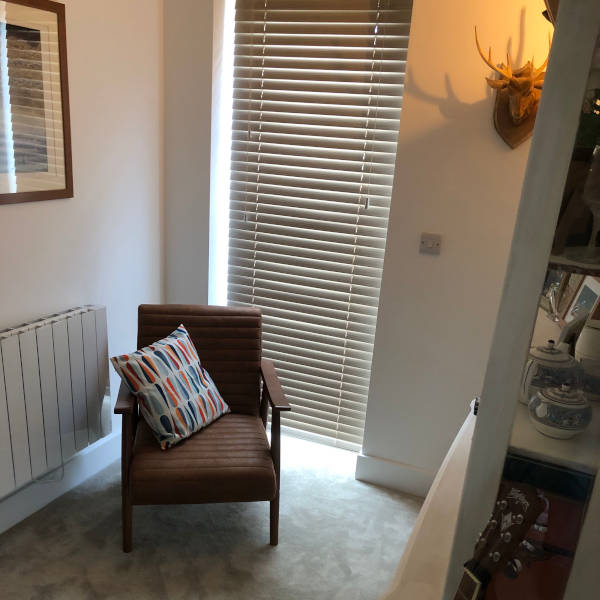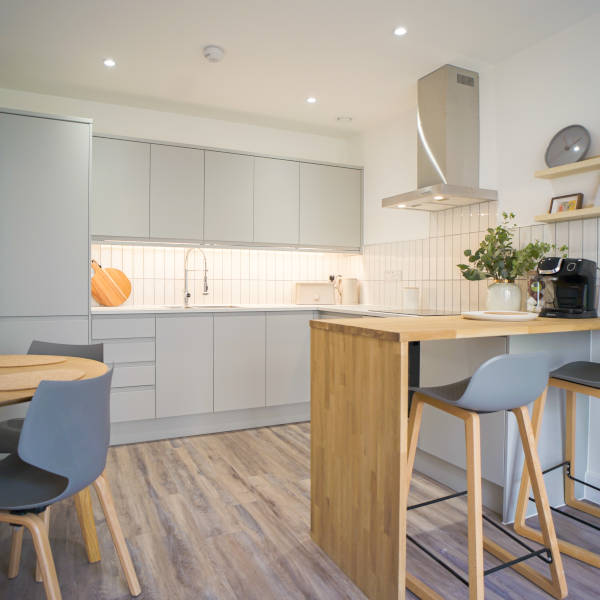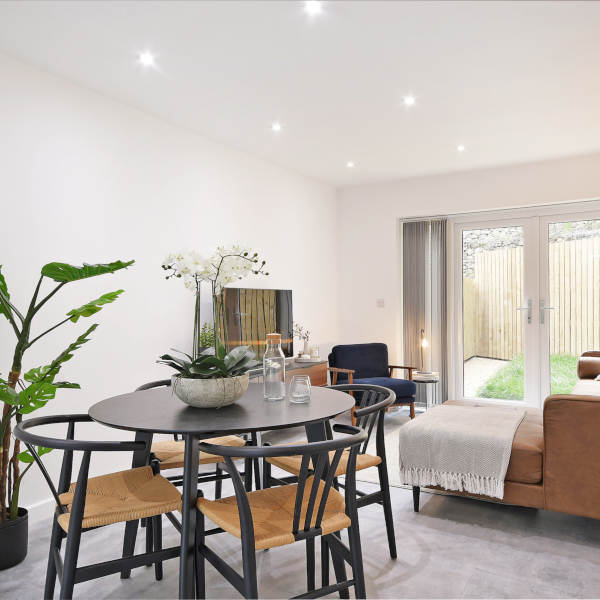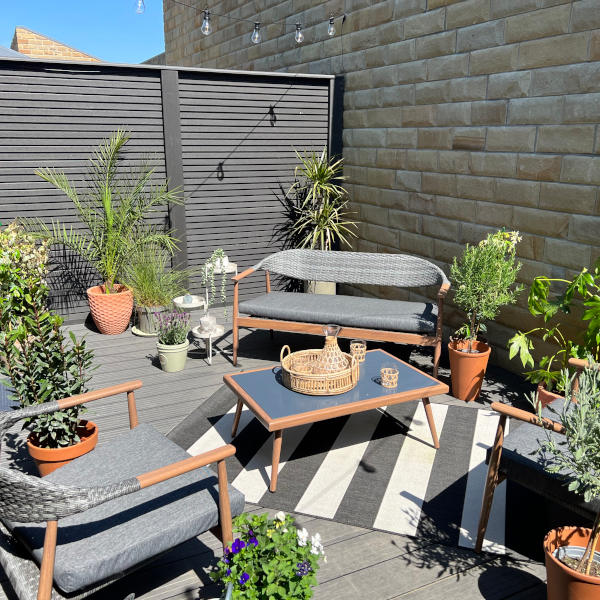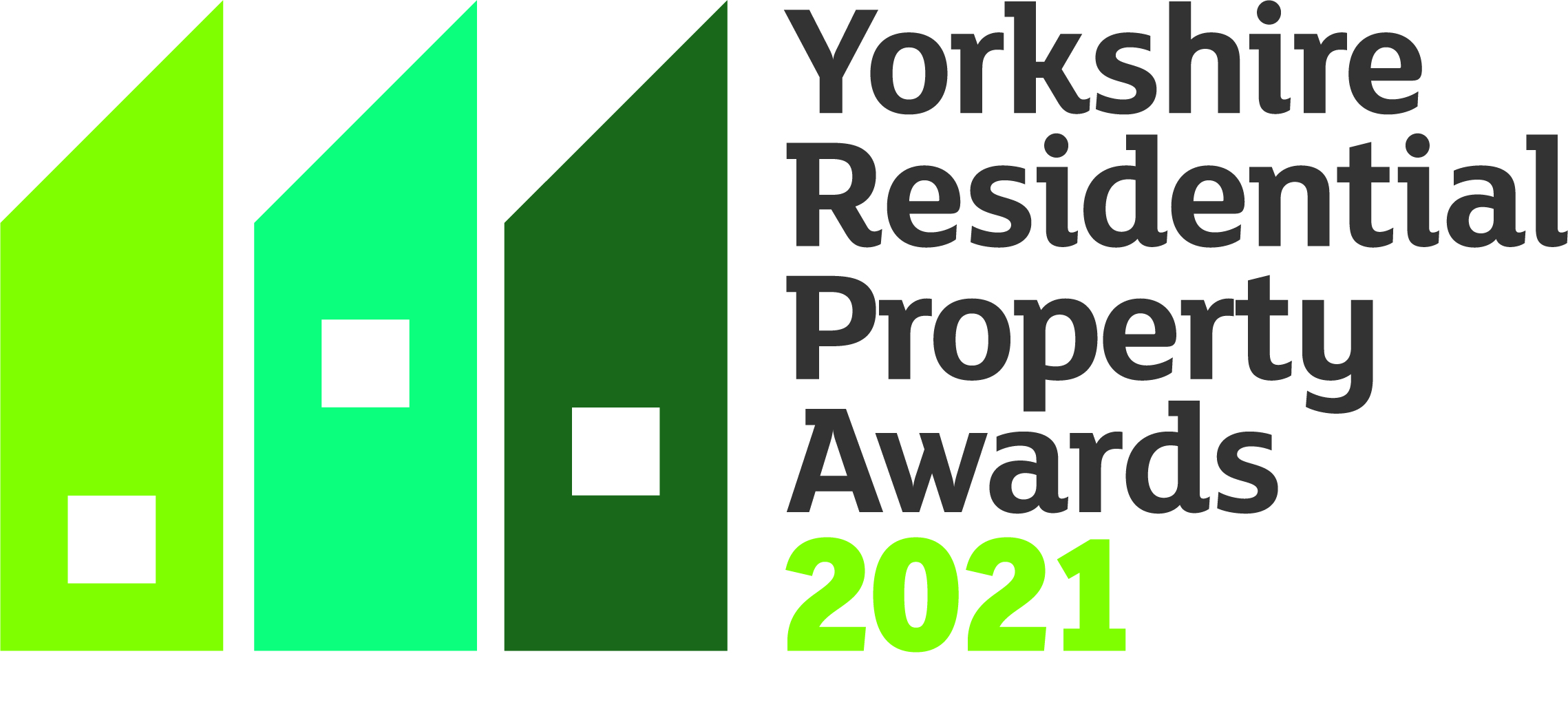New Build Stages: Understanding the Timeline
The exciting aspect of buying a new build is witnessing your dream house being constructed from the ground up, overseeing the entire process as it occurs. But have you ever wondered what stage your new build home is in, and how far along it is in the pipeline? Well, you’re in luck because Sky-House Co. has prepared an insightful timeline of events for your benefit!
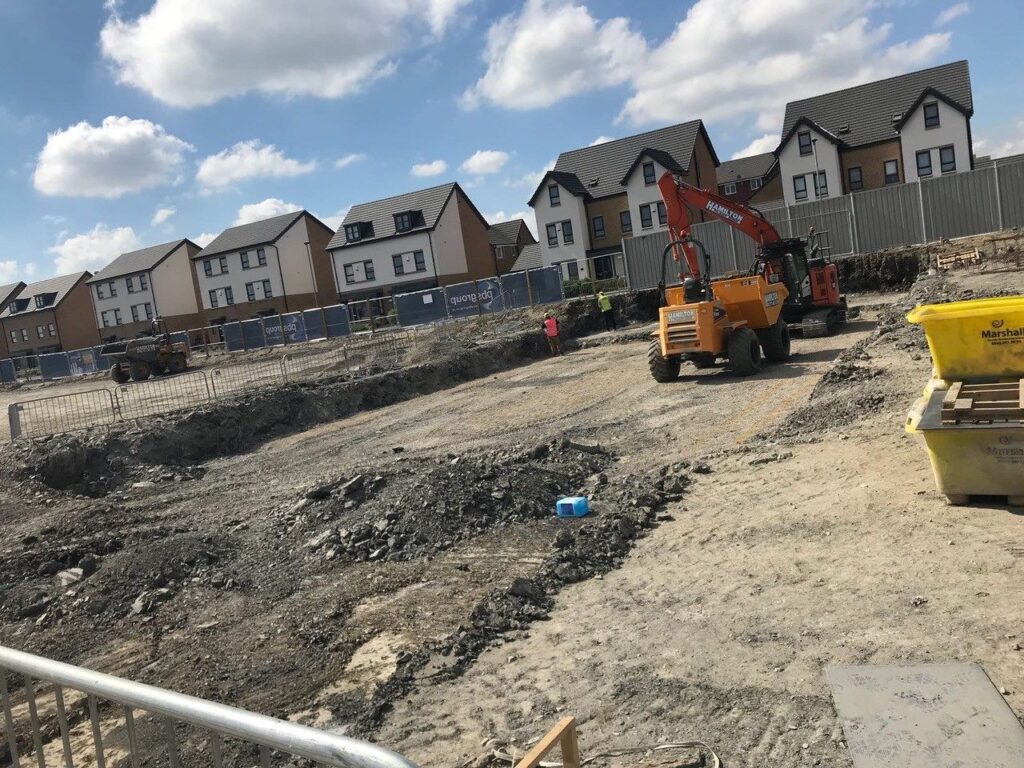
Phase one
Encompassing a stage structure between A to H, phase one covers site preparation through to the completion of the superstructure.
Plot preparation
Before foundations can be laid, the plot must be cleared, levelled and thoroughly prepared for construction, along with road access and the ability to implement infrastructure for necessary water, gas, electricity and essential lines. At this point, an engineer will plot exactly where the house will be constructed, based on existing plans.
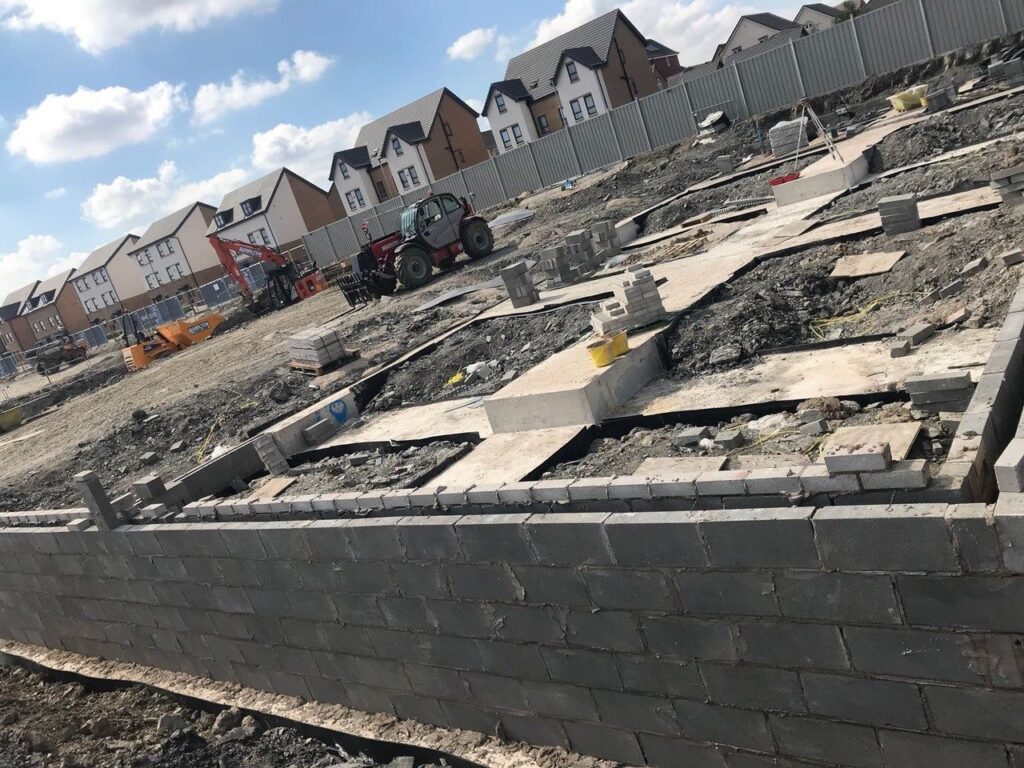
Foundations
Between stages A to C, the foundations of the property are laid, ensuring the home is built on level ground; offering even weight distribution and damp proofing at the base of the building. The type of foundation varies depending on the property type, in new build properties it is common to see strip foundations which pour a continuous concrete footing into a trench. The depth can be adjusted depending on the load requirements; however, this is dependent on the soil type at the site.
Building the sub and superstructure
Stages D to G witness the building come to life, focusing on the construction of each floor from the ground up. Buildings can primarily be constructed in two main methods depending on project specifications and building type.
Traditional: Brickwork referred to as the “brick and block” approach is supported by an inner block wall and timber floor/wall plates.
Modern: The SFS light gauge method builds structures from lightweight steel sections rather than wood.
Before a floor is completed, it must be completely sealed and insulated, with joists securely fitted and brickwork to the wall plate finalised. The superstructure leaves openings for doors, windows and the cavity wall insulation.
Once the superstructure is complete, the roof can be installed. This is an exciting part of the home building process, ensuring your home is watertight and secure by ICW standards. Trusses are fixed in place, followed by the felt and roof tiles, ensuring that necessary components such as vents, guttering and additional integrations are accounted for.
Once the roof is on, scaffolding can be removed and you can start to visualise your home! At this stage, any rendering or cladding works will be done to the property depending on the development plans, and all the windows and doors will be fitted.
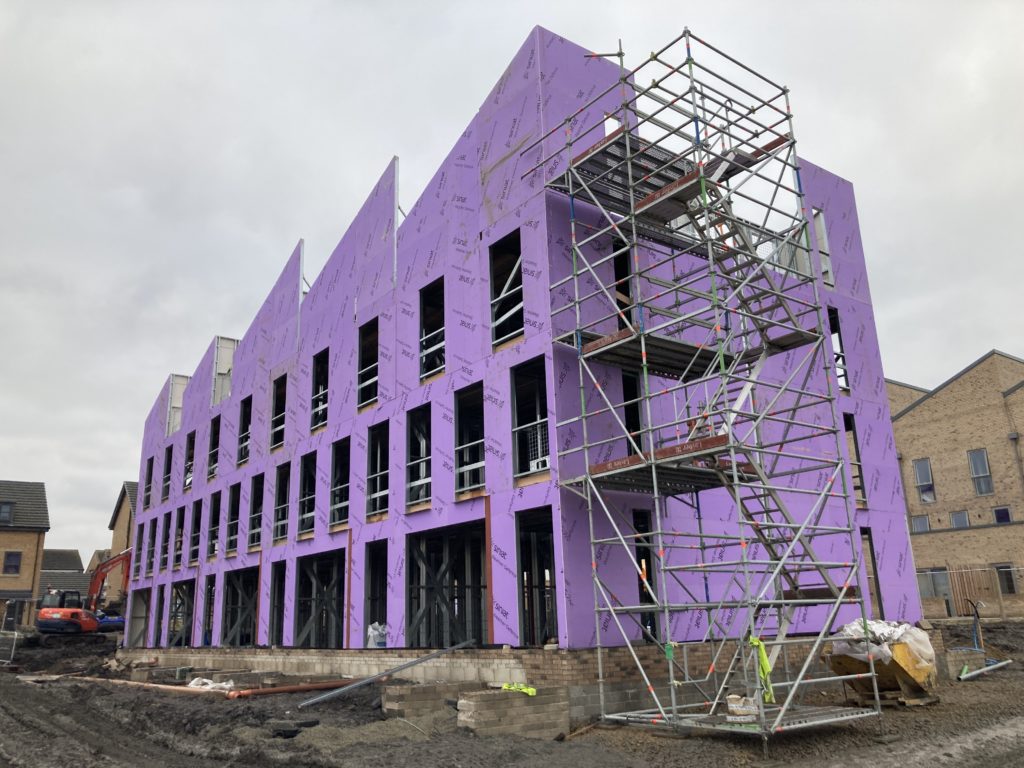
Phase two
External work and services
During the end of phase one and the start of phase two, external work on the property can commence to ensure that the main water and electricity supply is correctly working. All the integral connections for the property, including EV charging points, telecom installation and landscaping can also take place during this period.
Phase three
This phase is comprised of 13 internal stages – typically taking 1 week per stage to complete.
Internal work and handover
Now we’re onto the home stretch, and this is when qualified tradespersons finalise the interior of the property. Carpenters build the staircase and any necessary partitions, electricians install essential wiring for all power sources within your home, whilst a plumber integrates working water pipes and the boiler system. Finally, the walls and ceiling can be plastered and cavity walls are filled with insulation, meaning that the first phase of the internal fit-out, known as the ‘first fix’, is now complete.
Once the first phase has been inspected and meets NHBC specifications, the ‘second fix’ of the home can commence. All the final fixtures and design aspects of the house can now come together, from the kitchen, bathroom, skirting boards, light fixtures, solar panels, flooring, painting and more! You begin to see your personal choices selected earlier in the build start to be implemented into your home. At stage 7, you will be invited to a plot tour and oversee the building process.
Quality assurance
Quality inspections take place throughout the entire build process, ensuring they’re passed before the next phase can commence. Qualified inspectors adhere to NHBC codes of conduct and protect homeowners by ensuring the home is built to high regulatory standards. The property will receive a sparkle clean and any standard requirements such as warranties will be put into place. You will then undergo a home demonstration where you can inspect the property in-depth for any issues you deem fit. Once handover inspections are completed and the legal processes have cleared during stage 13, you’re ready to move in!
As you can see, the process of building a home requires extensive work and collaboration – finding a developer you trust is paramount to ensure even the finest details are taken care of.
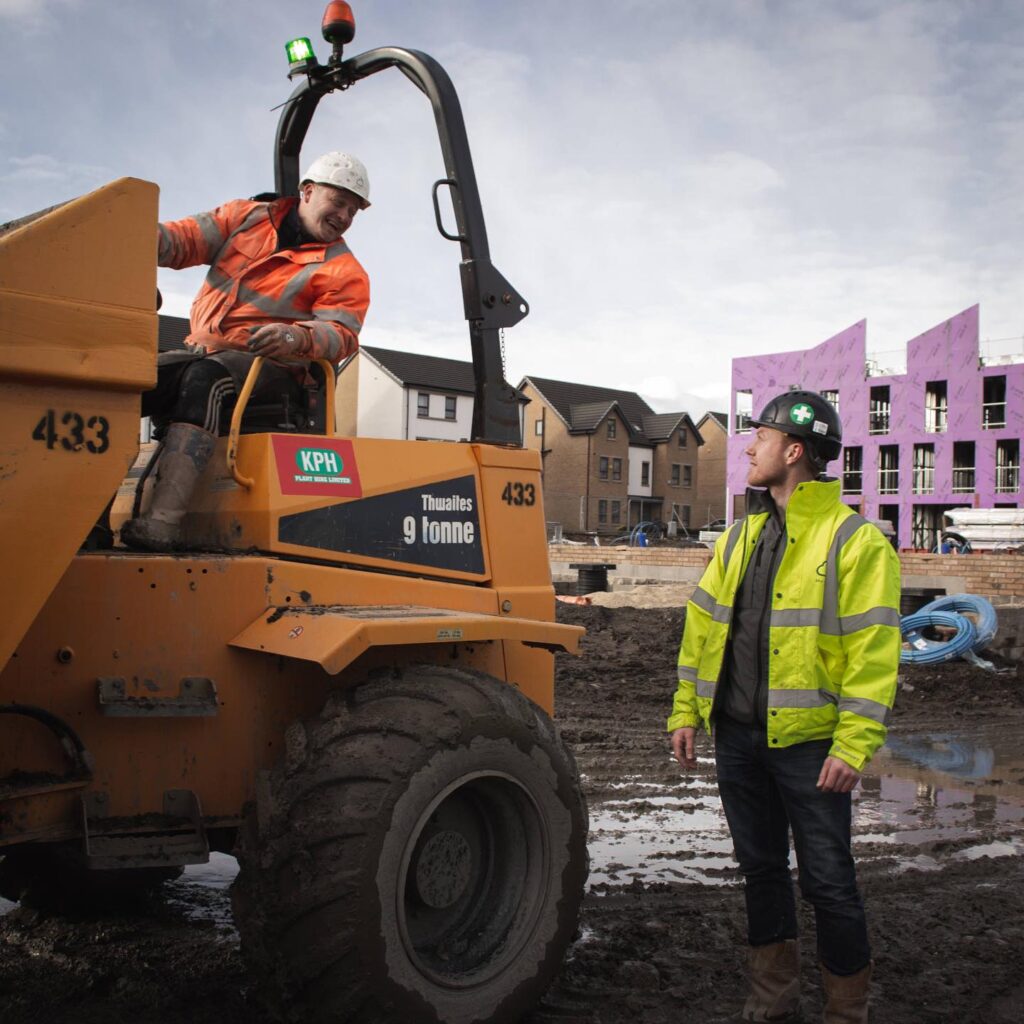
How long does it take to build a new home?
A new build property in the UK typically takes an estimated five to seven months to complete. However, this can vary on several factors, including the build complexity, site location and planning permission.
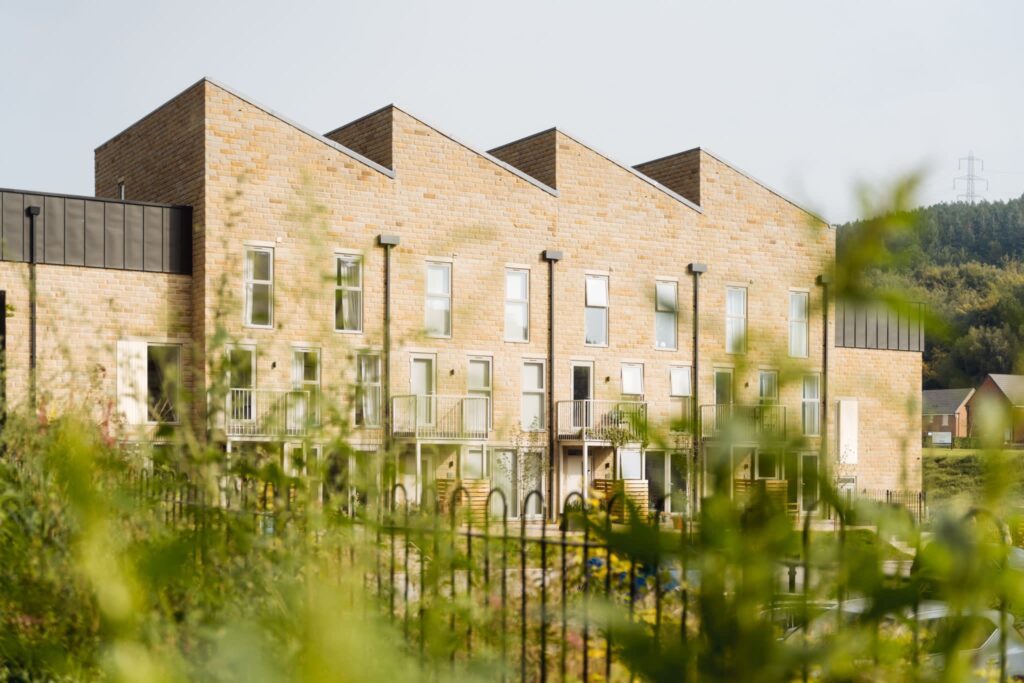
Fall in love with Sky-House Co. homes
At Sky-House Co., we keep our buyers informed throughout the complete home building process and implement frequent and stringent quality inspections – so you can have peace of mind knowing your home is in safe hands.
Our homes are more than a development, we establish thriving communities and design spaces with a human-first approach, encouraging growth and healthy living. We’re extremely proud of our sustainable homes, taking energy efficiency one step further and implementing eco-friendly integrations throughout the property. Whether it’s solar panels, EV charging or indoor heat pumps, we believe in putting people and the planet at the core of our designs.
For more guidance, get in touch with a member of our friendly team today or book a viewing at one of our newly built properties.
Neighbourhoods

We are proud of our neighbourhoods, which are built with care to create thriving and blossoming communities. Our homes are designed to help people live better lives.
